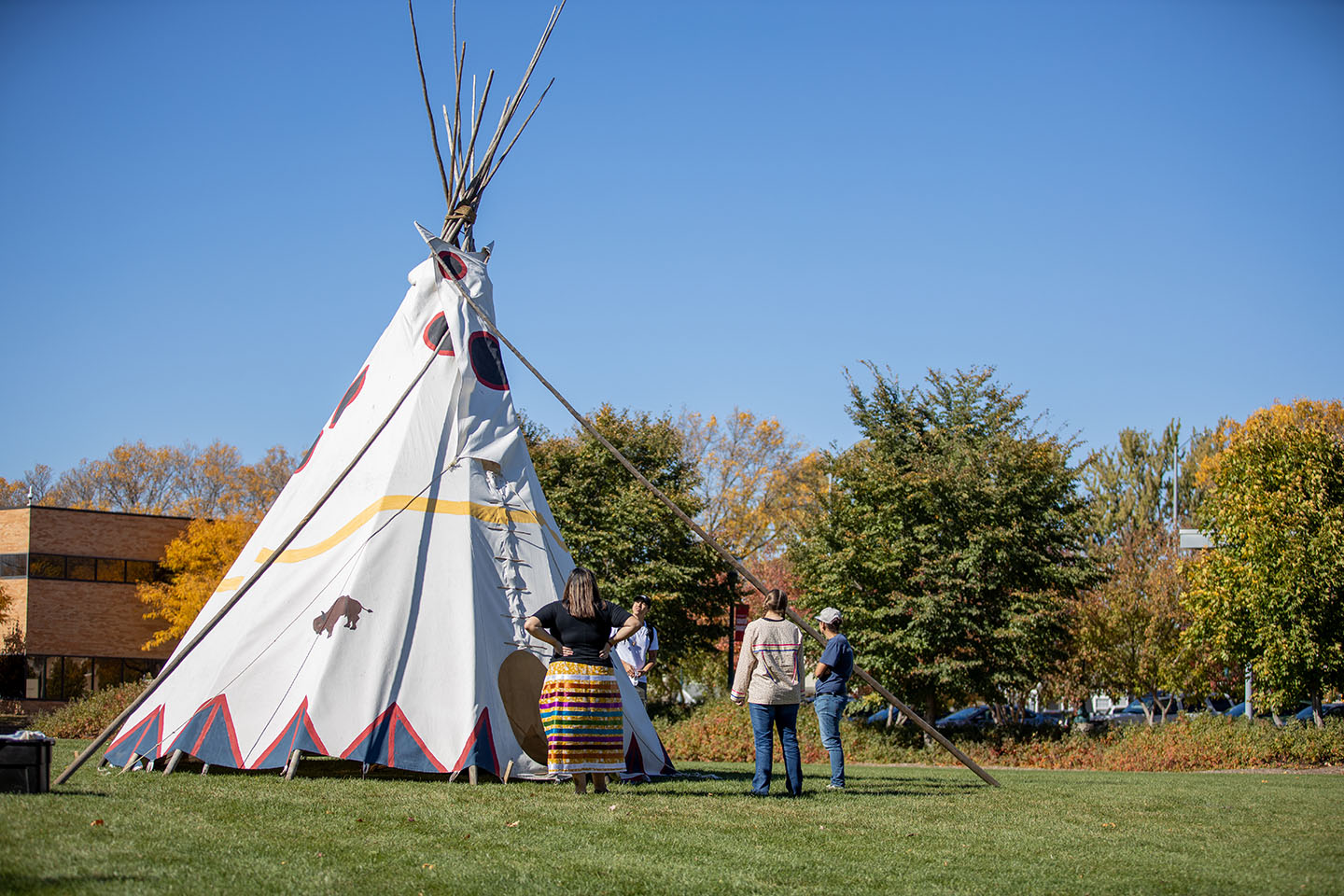
Institute of American Indian Studies to return to USD
Since 1990, South Dakota has celebrated Native American Day instead of Columbus Day on the second Monday of October each year. This year, USD celebrated the holiday by announcing the revitalization of the Institute of American Indian Studies (IAIS).
The IAIS, originally established at USD in 1955, was discontinued in 2009 after losing funding due to the 2008 financial crisis.
The revitalized Institute will be directed by Elise Boxer, assistant professor of Native American studies in the department of history at USD. In addition, Damon Leader Charge, assistant program coordinator of biomedical sciences at USD, will be the director of tribal outreach.
At the announcement, USD President Sheila Gestring was one of those who gave a speech. A tribal drum and song ritual were also performed in the Muenster University Center Ballroom on Monday.
“South Dakota has nine federally recognized tribes and we would like to see more American Indian students enrolled,” Gestring said in her speech on Monday. “We would like to continue to be the leader when it comes to oral history for Native Americans.”
One of the institute’s goals, Boxer said, is to focus on developing and facilitating community driven research rooted in Indigenous epistemologies. While doing this, the IAIS plans to also wants to prioritize protecting and respecting tribal sovereignty.
“The institute has made important contributions to indigenous intellectualism,” Boxer said at the announcement Monday. “I hope to continue this tradition and lead the Institute into a new era that continues to expand upon the original vision and mission of the Institute as a research center for the northern plains culture and history.”
One of the other main goals of IAIS is to increase targeted recruitment of tribal communities. With the revival of IAIS, there will now be more scholarship opportunities for Native American students.
“The Institute itself will now have the ability to reward $80,000 per year to American Indian students,” Gestring said. “That is huge too. That financial support is as important as the cultural and language support.
Gestring said focusing on recruitment is not enough. In addition, she said, the university and the Institute must emphasize the retainment of Native American students at USD.
“We want to (retain Native American students) in a very respectful way and we want to work with the tribal leadership,” Gestring said. “That is really Damon Leader Charge’s role. It is building those relationships, collaborating with tribal leadership and their students that are interested in pursuing a degree.”
Gestring said the hope is for the focus on recruitment and retainment will fulfill USD’s goal of being a more diverse and inclusive community, as outlined in her State of the University Address earlier this semester.
“I think it will help our diversity efforts at USD in several ways,” Gestring said. “Having those supports and workshops and preserving the cultures and the languages of the American Indians will no doubt help the USD and Vermillion community to continue to honor and respect the native people of these lands.”


